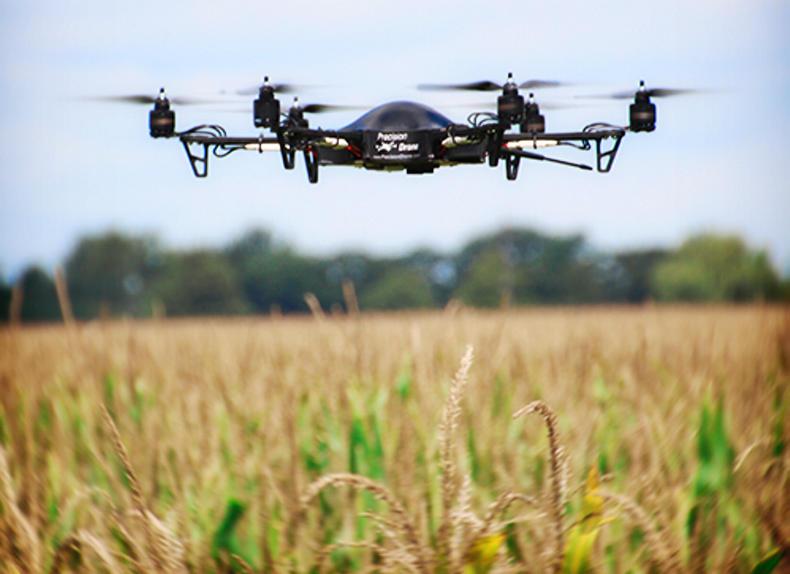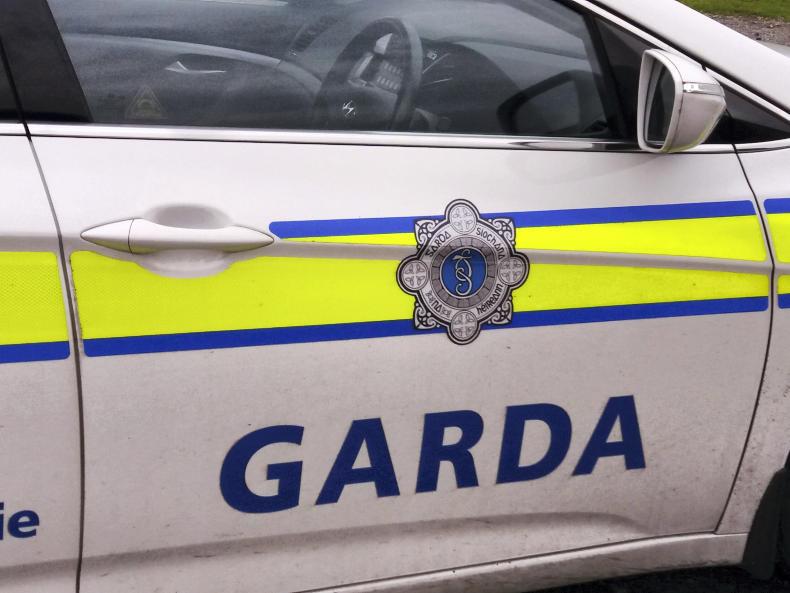A reader asks: “I recently saw a drone flying over my yard. I am concerned that it was being used to survey the farm for the purpose of burglary. The drones are able to get details on the layout, the entrances, the exits and the whole plan of the farm. What should I do if I see it again? I have a right mind to shoot it down the next time I see it.”
The operation and use of drones is primarily regulated by the Irish Aviation Authority (IAA), which passed two pieces of legislation in 2015, the Small Unmanned Aircraft (Drones) and Rockets Order 2015 and the Irish Aviation Authority (Nationality and Registration of Aircraft) Order 2015.
Under these regulations, all drones weighing 1kg or more has to be registered with the IAA. These regulations control the use of drones providing for the following flight restrictions:
Out of line of sight or farther than 300m from the drone operator.Over 120m above ground level.Within 120m of any person, assembly of people, vessel or structure not under the control of the drone operator.Unless the drone operator has permission from the landowner for take off and landing, and can do so without undue hazard to persons or property.Unfortunately, there does not appear to be any penalties for breaching these restrictions on the way drones can be flown.
While the IAA has the power to investigate and to prevent aircraft from flying, there are no criminal sanctions provided for in the regulations or any way of preventing someone who breaches the regulations from flying again.
Consequently they appear to be of little use to the landowner.
Trespassing
In addition to aviation regulations, the use of drones brings many other areas of law into play including insurance, privacy, data protection, intellectual property rights and nuisance and trespass.
Based on existing case law, it can be argued that flying a drone safely above another’s property at a height that does not interfere with the owner’s ordinary use of the land does not constitute trespassing.
In the English case of Leigh v Skyviews & General Ltd from 1978, the court overturned the ancient 13th century maxim “for whoever owns the soil, it is theirs up to the heaven and down to hell” in relation to airspace.
It established that for airspace above land, the rights of a property owner are restricted to height necessary for the ordinary use and enjoyment of his land and therefore the actions of the photography company in the case did not amount to trespass or nuisance as only a single photo was taken.
However, the court warned that if a claimant was subjected to the harassment of constant surveillance from the air, accompanied by the photographing of his every activity, then this would amount to a “monstrous invasion of privacy” and an actionable nuisance for which relief would be given.
The courts have not drawn a line as to what exactly will constitute trespass or nuisance by drones in these instances. We need a test case to go before the courts for that clarity to emerge.
Privacy and data protection
As drones can be used to collect information about people’s private lives, the Data Protection Commissioner has issued guidance on the use of drones.
This guidance advises that the processing of personal data kept by an individual and concerned solely with the management of his/her personal, family or household affairs or kept by an individual for recreational purposes is exempt from the Data Protection Acts.
This exemption, sometimes called the “household exemption”, would generally apply to the handling of the personal data of private persons, so long as this takes place for personal, non-commercial purposes. However, if drones do capture personal data from third persons it will mean that the Data Protection Acts will apply and drone operators will have to ensure that the safeguards and obligations are met.
Personal data would include, for instance, facial images or car registration plates. Breaches of the Data Protection Act are reportable to the Data Commissioner.
The topic of the use of force to protect oneself and one’s property from an intruder was covered in a previous column which can be read here.
The law may be summarised as allowing the use of reasonable force which can extend to lethal force in protecting oneself or others in a dwelling but this does not extend to using lethal force in protecting one’s property.
However, whether shooting down a drone would be considered reasonable is questionable.
If a person deliberately damages someone’s drone or interferes with its communication system, they may find themselves liable for trespass, causing criminal damage or worse if someone gets hurt.
Thus a person might be better advised to video the drone in action over the land and to report it to the gardaí and the Irish Aviation Authority if they have concerns about a potential break in.
Read more
Farmer fined for health and safety breaches - know your legal obligations
Legal Matters: 'Permission to cross cows over my field'
A reader asks: “I recently saw a drone flying over my yard. I am concerned that it was being used to survey the farm for the purpose of burglary. The drones are able to get details on the layout, the entrances, the exits and the whole plan of the farm. What should I do if I see it again? I have a right mind to shoot it down the next time I see it.”
The operation and use of drones is primarily regulated by the Irish Aviation Authority (IAA), which passed two pieces of legislation in 2015, the Small Unmanned Aircraft (Drones) and Rockets Order 2015 and the Irish Aviation Authority (Nationality and Registration of Aircraft) Order 2015.
Under these regulations, all drones weighing 1kg or more has to be registered with the IAA. These regulations control the use of drones providing for the following flight restrictions:
Out of line of sight or farther than 300m from the drone operator.Over 120m above ground level.Within 120m of any person, assembly of people, vessel or structure not under the control of the drone operator.Unless the drone operator has permission from the landowner for take off and landing, and can do so without undue hazard to persons or property.Unfortunately, there does not appear to be any penalties for breaching these restrictions on the way drones can be flown.
While the IAA has the power to investigate and to prevent aircraft from flying, there are no criminal sanctions provided for in the regulations or any way of preventing someone who breaches the regulations from flying again.
Consequently they appear to be of little use to the landowner.
Trespassing
In addition to aviation regulations, the use of drones brings many other areas of law into play including insurance, privacy, data protection, intellectual property rights and nuisance and trespass.
Based on existing case law, it can be argued that flying a drone safely above another’s property at a height that does not interfere with the owner’s ordinary use of the land does not constitute trespassing.
In the English case of Leigh v Skyviews & General Ltd from 1978, the court overturned the ancient 13th century maxim “for whoever owns the soil, it is theirs up to the heaven and down to hell” in relation to airspace.
It established that for airspace above land, the rights of a property owner are restricted to height necessary for the ordinary use and enjoyment of his land and therefore the actions of the photography company in the case did not amount to trespass or nuisance as only a single photo was taken.
However, the court warned that if a claimant was subjected to the harassment of constant surveillance from the air, accompanied by the photographing of his every activity, then this would amount to a “monstrous invasion of privacy” and an actionable nuisance for which relief would be given.
The courts have not drawn a line as to what exactly will constitute trespass or nuisance by drones in these instances. We need a test case to go before the courts for that clarity to emerge.
Privacy and data protection
As drones can be used to collect information about people’s private lives, the Data Protection Commissioner has issued guidance on the use of drones.
This guidance advises that the processing of personal data kept by an individual and concerned solely with the management of his/her personal, family or household affairs or kept by an individual for recreational purposes is exempt from the Data Protection Acts.
This exemption, sometimes called the “household exemption”, would generally apply to the handling of the personal data of private persons, so long as this takes place for personal, non-commercial purposes. However, if drones do capture personal data from third persons it will mean that the Data Protection Acts will apply and drone operators will have to ensure that the safeguards and obligations are met.
Personal data would include, for instance, facial images or car registration plates. Breaches of the Data Protection Act are reportable to the Data Commissioner.
The topic of the use of force to protect oneself and one’s property from an intruder was covered in a previous column which can be read here.
The law may be summarised as allowing the use of reasonable force which can extend to lethal force in protecting oneself or others in a dwelling but this does not extend to using lethal force in protecting one’s property.
However, whether shooting down a drone would be considered reasonable is questionable.
If a person deliberately damages someone’s drone or interferes with its communication system, they may find themselves liable for trespass, causing criminal damage or worse if someone gets hurt.
Thus a person might be better advised to video the drone in action over the land and to report it to the gardaí and the Irish Aviation Authority if they have concerns about a potential break in.
Read more
Farmer fined for health and safety breaches - know your legal obligations
Legal Matters: 'Permission to cross cows over my field'










SHARING OPTIONS